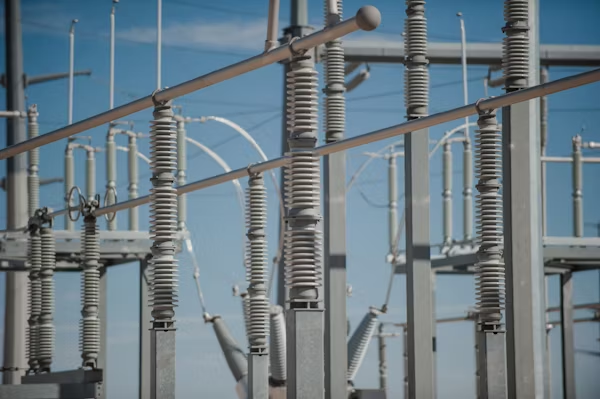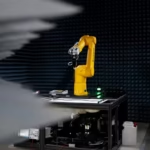In a world rapidly shifting toward sustainable energy, industries are facing immense pressure to decarbonize their operations. While the transportation and residential sectors have made significant progress in embracing green technologies, heavy industries—such as steel, cement, glass, and chemicals—remain some of the hardest to electrify due to their reliance on extremely high-temperature processes. This is where Calectra comes in—a Bay Area-based innovator determined to revolutionize industrial heating by offering clean, affordable, and powerful electric heat solutions capable of reaching remarkable temperatures.
Calectra is more than just another climate-tech startup. It represents a bold movement toward transforming how we power the backbone of modern civilization. By combining cutting-edge technology with an unwavering commitment to sustainability, Calectra is helping industries transition from fossil-fuel-driven operations to a cleaner, electrified future.
The Challenge: Decarbonizing Heavy Industry
Heavy industries form the core of global infrastructure—producing materials essential for buildings, vehicles, electronics, and countless everyday items. However, this sector also accounts for a large percentage of global greenhouse gas emissions. The main culprit lies in the reliance on fossil fuels for generating the intense heat required for processes such as smelting, forging, and chemical refining.
Traditional methods rely on natural gas, coal, or oil to generate temperatures exceeding 1,000°C. While effective, these fuels emit massive amounts of carbon dioxide. Electrification could replace these fuels, but the challenge has always been achieving such high temperatures efficiently and affordably through electricity.
Calectra recognized this gap and sought to address it directly—developing solutions that deliver industrial-grade heat using clean electric power, all while keeping costs competitive with fossil-based systems.
The Vision Behind Calectra
Calectra’s mission is simple yet transformative: to enable a zero-carbon future for heavy industry by electrifying process heat. But its approach is anything but ordinary. Instead of focusing only on incremental improvements, Calectra has taken a holistic view of industrial energy transformation—rethinking the design, engineering, and economics of high-temperature heat generation.
Their technology is built on the belief that sustainability should not come at a financial premium. By offering systems that are both energy-efficient and cost-effective, Calectra aims to make decarbonization not only feasible but also profitable for industrial players.
The company envisions a world where industrial plants run entirely on renewable electricity—transforming what was once considered an environmental challenge into a competitive advantage.
How Calectra’s Technology Works
At the heart of Calectra’s innovation is its advanced electric heating system, capable of generating temperatures up to 1600°C—levels suitable for even the most demanding industrial applications. This system converts electricity directly into heat with exceptional efficiency, avoiding the energy losses and emissions typically associated with combustion-based systems.
While specific technical details remain proprietary, Calectra’s design focuses on three major advantages:
Efficiency: Nearly all input electricity is converted into usable heat energy, drastically reducing waste.
Scalability: Systems can be adapted to small facilities or large industrial complexes.
Clean Energy Integration: By pairing with renewable sources like solar or wind power, Calectra’s heaters enable true zero-emission operations.
The result is a platform that offers both performance and sustainability—a rare combination in the industrial world.
The Significance of Process Heat Electrification
Process heat refers to the thermal energy required for industrial production processes—melting, refining, drying, or chemical reactions. Globally, process heat accounts for a large portion of industrial energy consumption, and most of it comes from fossil fuels.
Electrifying process heat holds enormous potential for emission reduction. However, the challenge lies in maintaining the necessary temperature and efficiency without driving costs through the roof. Calectra’s technology bridges this gap by enabling reliable, high-temperature electric heat at a competitive cost point.
Through this innovation, industries can maintain production quality and speed while significantly reducing their carbon footprint.
Why the Industrial Sector Needs Calectra
Many industries are eager to decarbonize but struggle with limited technological options. Renewable electricity is abundant and getting cheaper, yet few technologies can harness it effectively for high-temperature applications.
Calectra’s solution meets that need head-on. It provides a direct path for industries to transition from fossil fuels without sacrificing performance or profitability.
Here’s why Calectra’s model matters:
Cost-Effectiveness: Electrification often comes with high installation and operational costs. Calectra’s system, however, is designed for affordability and scalability.
Flexibility: It can be integrated into existing infrastructure, making it easier for companies to upgrade without massive overhauls.
Carbon-Free Energy: By eliminating combustion, Calectra’s systems remove on-site emissions entirely.
Future-Proofing: As carbon taxes and environmental regulations tighten, adopting clean technologies like Calectra’s ensures long-term compliance and sustainability.
The Bay Area Advantage
Being based in the Bay Area—a global hub for innovation, clean tech, and energy transformation—gives Calectra a unique edge. The region’s ecosystem fosters collaboration between engineers, researchers, and investors passionate about solving climate challenges.
This strategic location allows Calectra to partner with top research institutions, energy providers, and industrial leaders. The company’s proximity to forward-thinking policymakers also accelerates the adoption of clean industrial technologies.
By leveraging the Bay Area’s culture of innovation, Calectra is shaping a new standard for what’s possible in sustainable manufacturing.
The Economic Impact of Industrial Electrification
Transitioning to electric heat isn’t just an environmental move—it’s a smart economic decision. Renewable electricity prices are declining globally, while fossil fuel markets remain volatile and expensive.
Calectra’s model capitalizes on this trend, helping industries stabilize their operational costs and hedge against unpredictable fuel prices. Over time, electric systems require less maintenance, experience fewer breakdowns, and offer higher efficiency, resulting in long-term savings.
Moreover, companies adopting Calectra’s technology gain a competitive advantage by meeting sustainability goals faster, attracting investors focused on ESG (Environmental, Social, and Governance) standards, and appealing to environmentally conscious customers.
Driving Toward a Zero-Carbon Future
Calectra’s work contributes directly to the global mission of achieving net-zero emissions. As governments and organizations commit to climate targets under international agreements, industries must act swiftly to decarbonize their processes.
By focusing on one of the hardest sectors to electrify, Calectra is helping pave the way for an industrial revolution powered entirely by clean energy. Their solutions make it possible for manufacturing to align with a zero-carbon economy—without compromising efficiency or affordability.
Partnerships and Industry Collaborations
The road to industrial electrification requires collective effort. Calectra collaborates with manufacturers, utilities, and renewable energy providers to integrate electric heat solutions into diverse applications.
These partnerships enable large-scale demonstrations, proving that Calectra’s systems are both reliable and transformative. Through these collaborations, industries gain hands-on experience in transitioning from fossil fuels to electric systems—accelerating adoption and scaling impact.
Innovation Meets Sustainability
Calectra’s technology represents more than a breakthrough in industrial heating—it symbolizes a commitment to sustainable innovation. By merging advanced engineering with environmental responsibility, Calectra shows that progress and sustainability can coexist.
Each system installed contributes to cleaner air, reduced emissions, and a more resilient industrial ecosystem. The company’s innovation extends beyond technology—it’s a mindset that redefines what’s possible when industries prioritize the planet alongside productivity.
The Future Outlook for Calectra
Looking ahead, Calectra’s potential impact is immense. As the demand for clean industrial energy grows, the company is poised to become a cornerstone of the global decarbonization movement.
Its scalable solutions could be deployed in sectors ranging from steelmaking to ceramics, helping replace billions of tons of fossil fuel consumption annually. Furthermore, as renewable grids expand, the synergy between green electricity and Calectra’s technology will only strengthen.
In the coming years, Calectra aims to continue refining its technology, expanding into new markets, and driving policy advocacy for industrial electrification.
Conclusion
Calectra is not just developing technology—it is redefining the future of industrial energy. With a mission to deliver clean, affordable, and powerful electric heat for heavy industries, the company stands at the forefront of the global shift toward sustainability.
By combining cost-effectiveness, innovation, and environmental consciousness, Calectra proves that industrial progress and planetary preservation can go hand in hand. As industries worldwide confront the challenge of decarbonization, Calectra offers a clear, practical, and inspiring path forward—a future where every factory, foundry, and refinery runs on clean electricity.
The age of industrial electrification is here—and Calectra is leading the charge.
FAQs
1. What is Calectra?
Calectra is a Bay Area-based company developing clean electric heat systems for heavy industrial applications.
2. What industries can benefit from Calectra’s technology?
Industries like steel, glass, cement, and chemicals can use Calectra’s systems for high-temperature processes.
3. How hot can Calectra’s system get?
Calectra’s electric heaters can reach temperatures of up to 1600°C, suitable for most heavy industrial needs.
4. How does Calectra help reduce carbon emissions?
By replacing fossil fuel combustion with electricity, Calectra eliminates direct CO₂ emissions from industrial heating.
5. Is Calectra’s technology cost-effective?
Yes, it’s designed to deliver high-temperature heat at competitive costs compared to traditional fossil-based systems.
6. Where is Calectra based?
Calectra is headquartered in the San Francisco Bay Area, a global hub for clean energy innovation.







